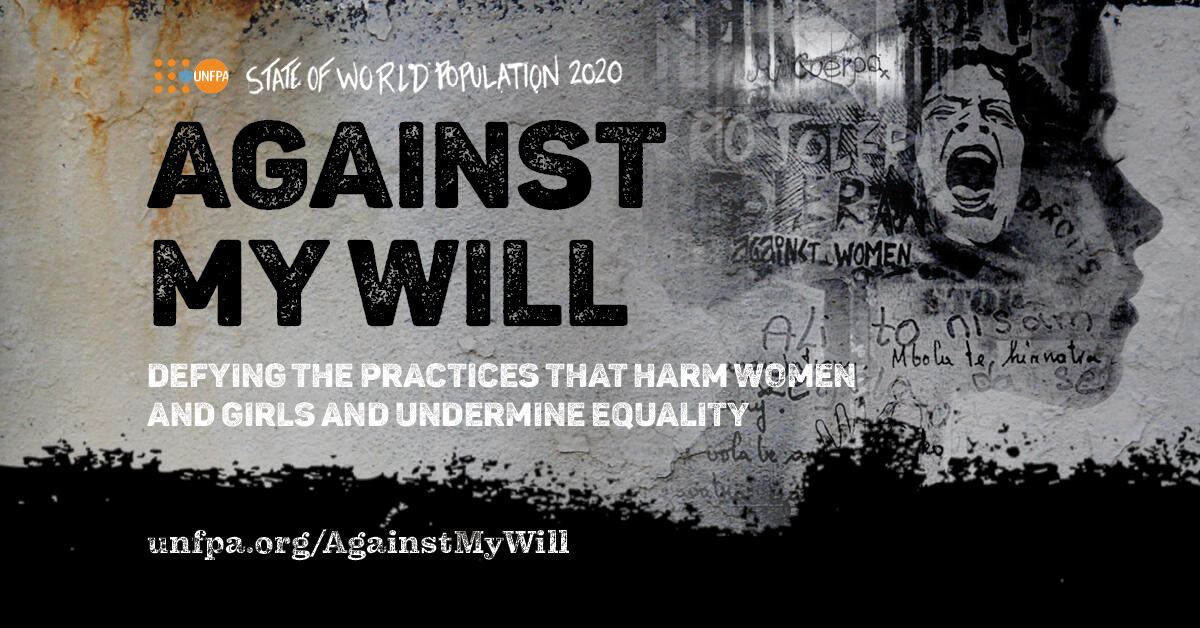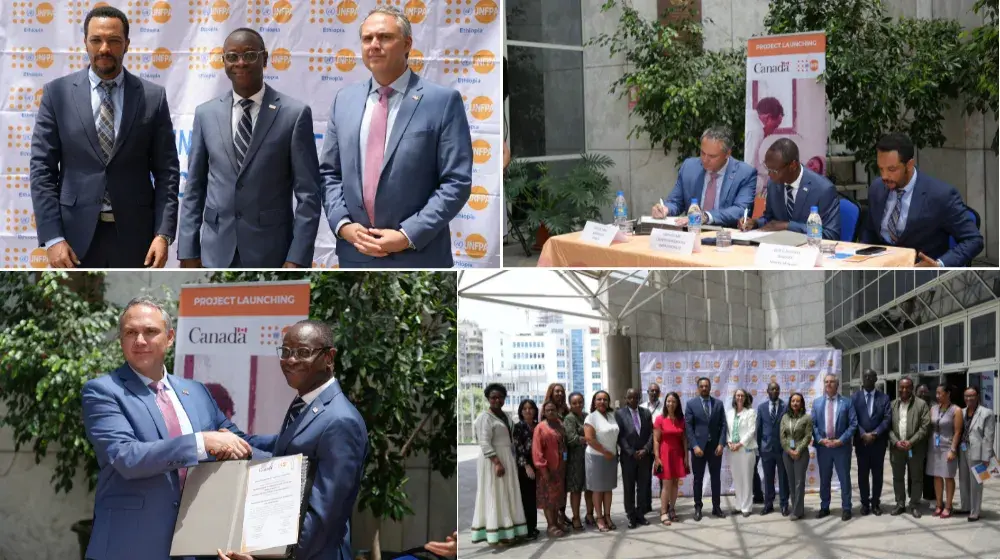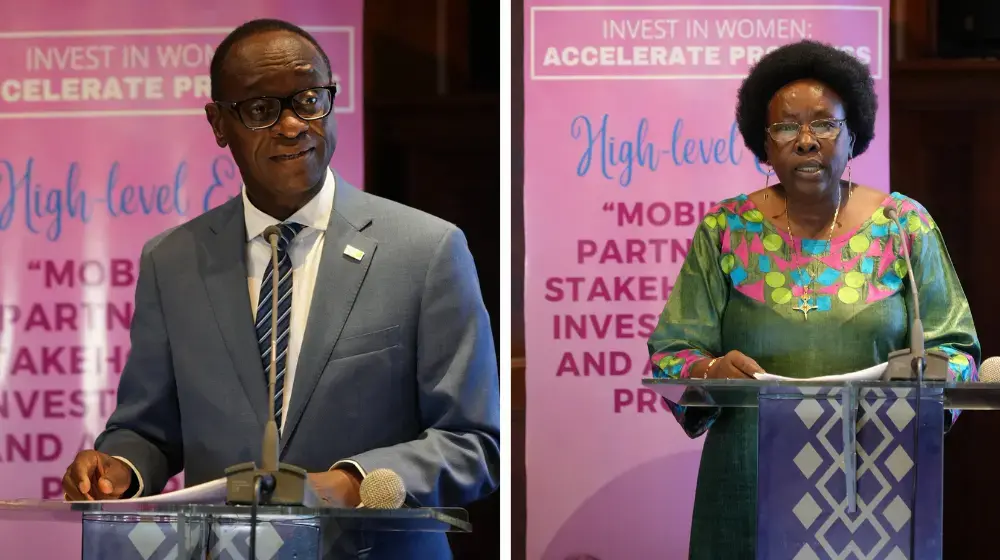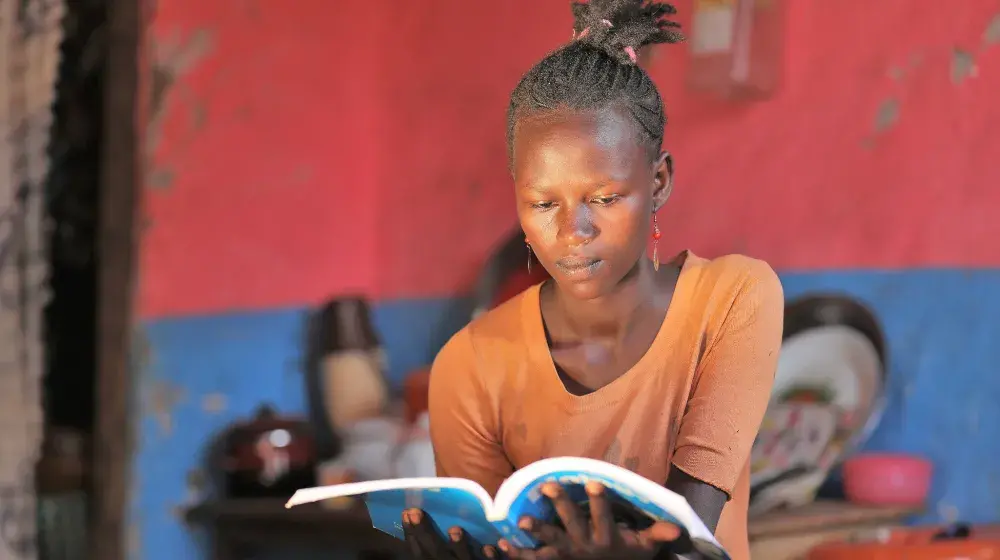Statement by UNFPA Executive Director Dr. Natalia Kanem
Imagine a girl. She’s 12 years old. She loves school. Her teacher says she has a gift for math. Then one morning, when she wakes up, her parents tell her to put on her best clothes. In a couple hours, she’s going to be married off to a neighbor who is at least three times her age. She’ll never be able to go back to school.
Imagine another girl. She’s 16. She wakes up one day to find out that she’s about to go through a rite of passage. A few hours later, her genitals are cut by the woman who does it to all the girls in the village.
And imagine yet another girl. She’s four years old. She overhears her parents say how cursed they are not to have a son. They complain that their daughter is nothing but a burden.
As UNFPA’s State of World Population report shows, there’s no need to imagine these scenes--because they are all real. And they play out tens of thousands of times a day. Every day. All over the world.
Our report cites at least 19 specific practices against girls and women that have been almost universally denounced as abuse and violations of human rights, ranging from breast ironing to virginity testing.
Yet three in particular remain stubbornly widespread:
- female genital mutilation
- child marriage
- and gender-biased sex selection.
The human cost is extraordinary:
This year around the world, more than 4 million girls will be subjected to genital mutilation.
Today, 33,000 girls will be forced to marry.
Because of decades of gender-biased sex selection and the neglect of daughters relative to sons, a shocking 140 million girls are missing today from the world’s population.
When men far outnumber women, social problems can emerge, exacerbating forms of gender-based violence, including rape, coerced sex, sexual exploitation, trafficking and child marriage.
What these diverse harmful practices all have in common is that they are rooted in gender inequality and a desire to control women’s bodies and lives.
Though they inflict a devastating array of harms on individual women and girls, the harms inflicted on the world at large, and on future generations, may be greater still.
As the health, education and human potential of women and girls are diminished, so too is all of humanity.
When so many girls and women are…
- Unwanted.
- Cut.
- Erased.
- Given.
- Traded and sold…
...Our common future is undermined.
We should all be outraged.
The international community overwhelmingly agrees that harmful practices cannot be tolerated. Decades of international treaties and other instruments call on governments, communities and individuals to end them.
Governments have already taken steps to end harmful practices, often by enacting and enforcing laws banning them. Laws are, however, just a starting point. And in some cases, laws can have the unintended effect of driving these practices underground.
Decades of experience and research show that bottom-up, grassroots approaches are better at bringing change...
...Because communities themselves are best suited to transform themselves.
Our role at UNFPA is to support communities by facilitating conversations that help parents understand the physical and psychological toll of these practices--and the benefits that accrue to all when these practices are abandoned.
Organic change is lasting change.
At the same time, we must tackle the problem by tackling the causes.
Gender discrimination—and harmful practices—thrive on biased norms and stereotypes. While norms or stereotypes are just ideas, they can be powerful, destructive forces. At the same time, because they are ideas, they can be changed, no matter how deeply rooted they are.
And we’ve seen these ideas change in the Republic of Korea, Singapore and Tunisia, where son preference was once strong, where men once far outnumbered women.
We have to address the subordinate position of women and girls in society. In this regard, men have a special role to play. Many more men need to use their privilege to raise the value of girls and demand equal treatment and equal rights. We know this works, because we’ve seen successes in places like Niger, where UNFPA supports a Husbands School to promote gender-equal social norms.
Economies and legal systems must be restructured to guarantee every woman equal opportunities. Countries such as Bangladesh and Ethiopia have shown that when girls and women have better economic options, harmful practices such as child marriage and son preference begin to decline.
Our goal at UNFPA is to end harmful practices by the end of this decade. This is also a goal of the international community and is a target of the United Nations Sustainable Development Goals.
This requires us to step up our investments in what we know works. Otherwise, we will not meet our goals.
We still have a very long way to go. While the rates of harmful practices are falling, the absolute numbers of girls subjected to them are growing, largely because of population growth.
Three words sum up this UNFPA report:
First, respect: We must foster respect for women and girls by changing entrenched attitudes and practices that dehumanize and commoditize them. This means disrupting root causes of inequality and respecting girls’ autonomy.
Second, protect: We must protect women and girls by enacting and enforcing laws against practices like child marriage and female genital mutilation, but also by changing attitudes and norms. Parents need to understand the long-term harm of these practices and take a stand against them.
And finally, fulfill. Governments must fulfill their obligations under human rights treaties that require elimination of female genital mutilation and child marriage.
These three words--respect, protect and fulfill--can bring real change and real results for women and girls.
We cannot stop until the rights, choices and bodies of all girls are fully their own. And we can’t let anything, not even the COVID-19 pandemic, get in our way.
We finalized the State of World Population 2020 before the extent of the crisis and its impact on the health and rights of women and girls everywhere became clear.
We know from research we commissioned that national and international efforts to bring an end to harmful practices have scaled back or stalled because of the pandemic.
If delays in programmes aimed at ending female genital mutilation last six months, an additional 2 million girls could be subjected to this harmful practice over the next decade.
Meanwhile, interruptions to our efforts to end child marriage could mean an additional 13 million child marriages between now and 2030.
While the pandemic certainly makes our job harder, it also represents an opportunity to reimagine the future. In that new reality ten years from now, the 12-year-old girl we imagined earlier now has the power to live free of harm and control her own destiny.
That is a world worth stepping up and fighting for every single day.
Millions of girls are counting on us.





